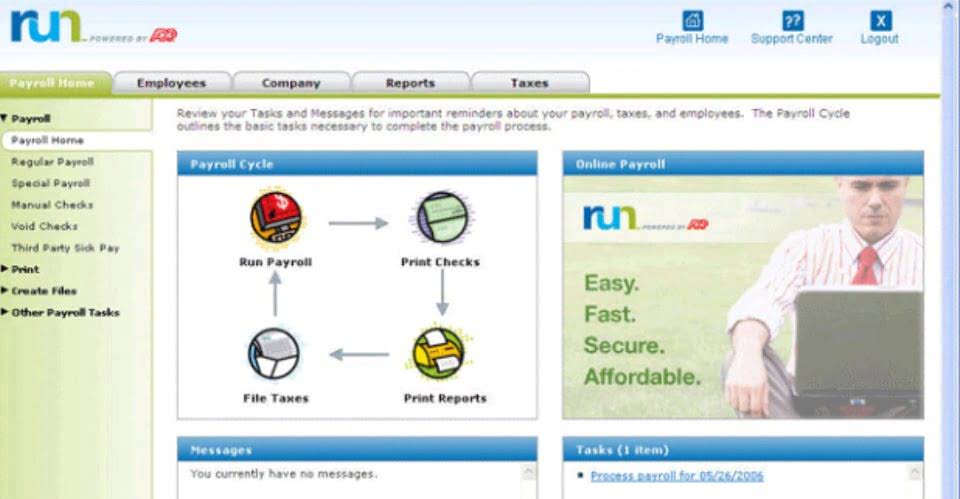What is the statement of comprehensive income?

Paying more than the amount in the income statement is unfavorable for the corporation’s cash balance. As a result the $9,000 decrease in accounts payable will appear in parentheses on the SCF. The historical cost principle means that most of the amounts shown on the income statement reflect a corporation’s vast number of actual transactions that occurred with parties outside of the corporation. Most of the transactions were routinely recorded by the accounting system, but some additional amounts were included through adjusting entries. Generally, the amounts reported on the financial statements originated from the corporation’s business transactions that were recorded and stored in the general ledger accounts.
Key Takeaways

The statement of cash flows (SCF) or cash flow statement reports a corporation’s significant cash inflows and outflows that occurred during an accounting period. This financial statement is needed because many investors and financial analysts believe that “cash is king” and cash amounts are required for various analyses. The SCF is necessary because the income statement is prepared using the accrual method of accounting (as opposed to the cash method).

Working Capital and Current Ratio

Accumulated Other Comprehensive Income (AOCI) represents a component of financial statements that provides insights into a company’s financial activities beyond net income. It captures specific gains and losses excluded from traditional profit and loss measures, offering stakeholders a broader understanding of an entity’s financial health. The balance sheet reports the assets, liabilities, and owner’s (stockholders’) equity at a specific point in time, such as December 31. The balance sheet is also referred to as the Statement of Financial Position.
Profit, loss and other comprehensive income
Each category represents economic activities that impact equity without directly influencing net income. Comprehensive Income or Statement of Comprehensive Income is a financial performance statement that listed down all profit and loss and other comprehensive income of entity for the period of time. Although the notion of comprehensive income is shared by both IFRS and US GAAP, there are some changes in how it is computed and reported under each set of standards. To guarantee that their financial statements meet the criteria of both IFRS and US GAAP, companies who operate under both standards may need to make modifications.
- In conclusion, income statements are vital for financial analysis.
- Misuse of OCI would undermine the credibility of the profit for the year figure and key investor ratios used by stakeholders to assess an entities performance.
- Under hedge accounting rules, the effective portion of gains or losses on derivatives designated as cash flow hedges is recognized in OCI and accumulated in AOCI.
- Holders of common stock elect the corporation’s directors and share in the distribution of profits of the company via dividends.
- Let us understand this concept with the help of a basic statement of comprehensive income example.
Why is it critical for stakeholders to understand financial reports?

However, a company with other comprehensive income will typically file this form separately. The statement of comprehensive income is not required if a company does not meet the criteria to recording transactions classify income as comprehensive income. The net income section provides information derived from the income statement about a company’s total revenues and expenses.
Common Mistakes to Avoid

Market conditions, regulatory changes, and corporate strategies are primary drivers of AOCI variability. Statement of Comprehensive Income records both operating profit and loss and other comprehensive income which is not from normal operating activities. This ratio is an indicator of a company’s ability to meet its current obligations. (Some corporations have preferred stock in addition HVAC Bookkeeping to their common stock.) Shares of common stock provide evidence of ownership in a corporation. Holders of common stock elect the corporation’s directors and share in the distribution of profits of the company via dividends.
What’s the Benefit of the Comprehensive Income Statement?
A current liability account that reports the amounts owed to employees for hours worked but not yet paid as of the date of the balance sheet. The systematic allocation of the cost of an asset from the balance sheet to Depreciation Expense on the income statement over the useful life of the asset. (The depreciation journal entry includes a debit to Depreciation Expense and a credit to Accumulated Depreciation, a contra asset account).
The above case is for gains and losses flowing through the income statement. Though this statement has some predictive value, it makes no statement of comprehensive income indication of the timing for when revenue and expense items will be realized in the future. In some circumstances, companies combine the income statement and statement of comprehensive income, or it will be included as footnotes.
- The accounting records are often referred to as the corporation’s books.
- For instance, changes in interest rates affect the fair value of available-for-sale securities, leading to unrealized gains or losses in AOCI.
- This will usually occur to allow the SOPL to provide more relevant information or provide a more faithful representation of an entity’s performance.
- At present it is down to individual accounting standards to direct when gains and losses are to be reported in OCI However, there is urgent need for some guidance around this issue.
- GAAP and IFRS ensure accurate AOCI reporting, providing a transparent view of these non-operational financial activities.
Users of the Financial Statements
Unrealized income might come from non-owner sources, including gains due to foreign currency transactions, fluctuating asset values, and hedge financial instruments, among other financial events. The statement of comprehensive income gives company management and investors a fuller, more accurate idea of income. The distinction lies in the nature and timing of the items reported. Net income is used to calculate earnings per share (EPS), a key profitability metric, while AOCI does not directly influence EPS.
